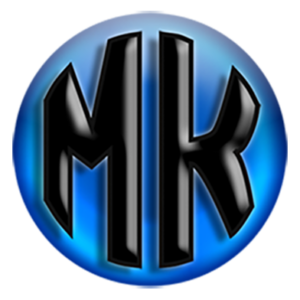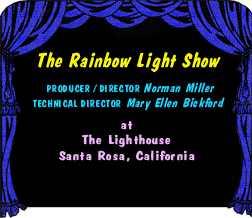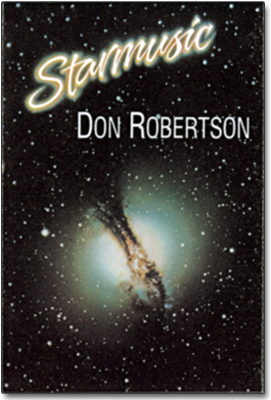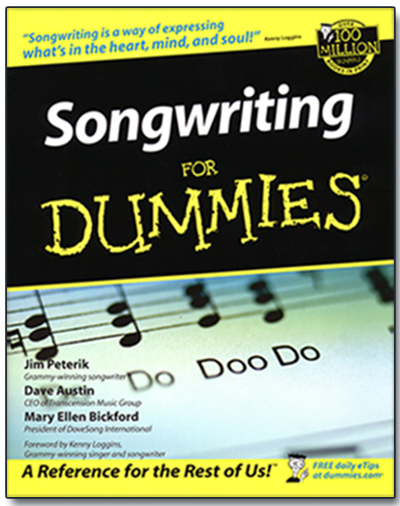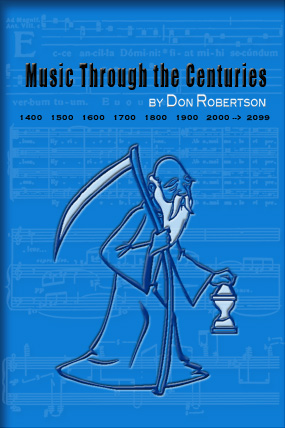The Musical Kaleidoscope Story
by Don Robertson
The Years 1972 Through 2022
This is Part 2 of the continuing story of my journey leading to the Musical Kaleidoscope project. Part 2 details my continuing journey beginning with my discovery of the glorious sacred music of the Renaissance in 1972.
Don Robertson
1972 - Renaissance Sacred Music
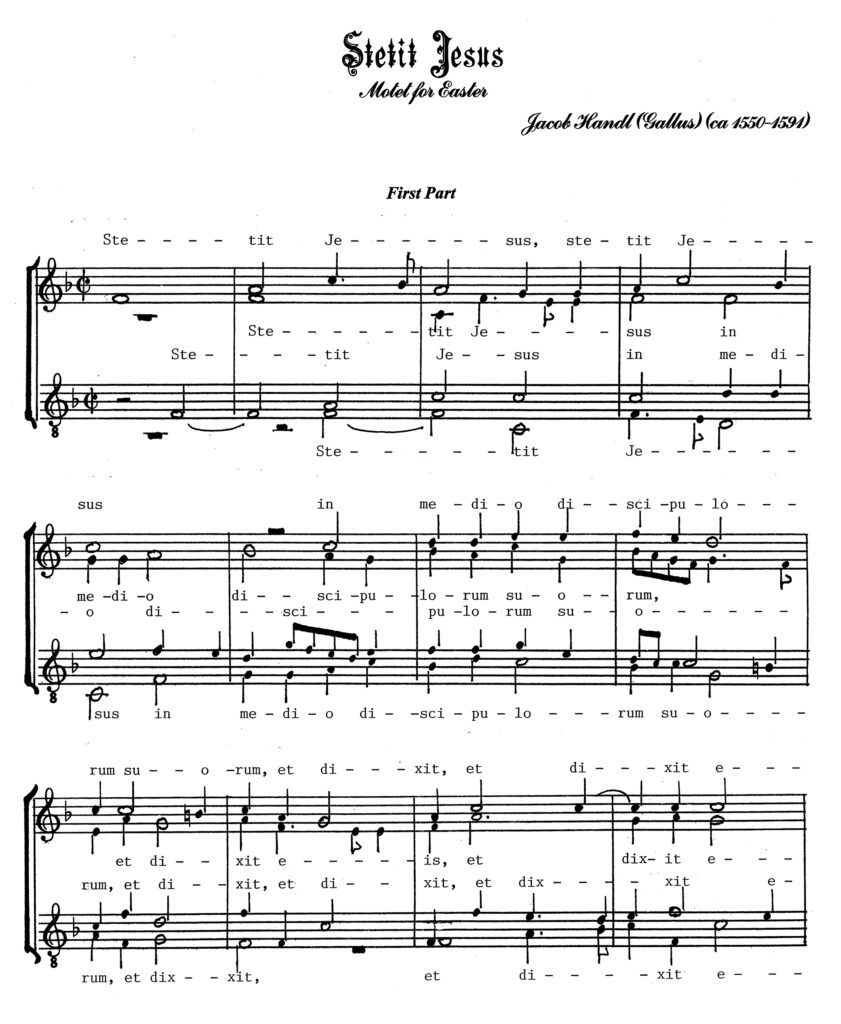
Renaissance Follow-Along Scores
One night in San Francisco during 1971, I had a dream. In this dream I heard a voice saying that Bach was a very great composer, but other great composers had lived before his time. Then, in the dream, I was shown an album cover with the name Palestrina written on it. I had known about the music of the 16th century Italian composer from my studies at Colorado University, but I had never considered his music interesting. I took my dream seriously, however, and at this point I began daily listening sessions, finally grasping what Palestrina’s amazing music was all about. I was astounded by the beauty of the great music from the 16th century, and I embarked upon a three-decades-long research of Renaissance sacred music and Gregorian chant, acquiring every available recording, and searching for scores, which, unfortunately, were not available commercially. My search for original manuscripts of this music led me to some of our great university libraries, where I spent hours in front of copy machines, making copies of important musical scores, and then, using a drafting table, I recopied these scores into modern notation for publications that will be forthcoming from the Musical Kaleidoscope project.
1974 - Wagner
In 1974, I discovered the music of the 19th-century German composer Richard Wagner. Despite my university and Juilliard music training, I had fallen victim to the false ideas about this composer that had flooded mass thinking since he was alive: that he was a terrible person who hated Jews. After listening to the Prelude to the opera Lohengrin that describes the angelic descent of the holy grail, I undertook a two-year research project, reading and collecting a cabinet of books and studying the German language. Richard Wagner is not only one of our greatest composers, but a great music dramatist. His works penetrated powerful emotional and spiritual barriers. His incisive rhetoric infuriated many who were intrenched in stilted ideas about art and man, and thus he became the enemy that many describe him as today. Wagner was a huge influence on the artistic movement in France known as impressionism and on the music of the composer Alexander Scriabin, both of whom I will describe next.
Learn about Wagner here
1975 - Alexander Scriabin
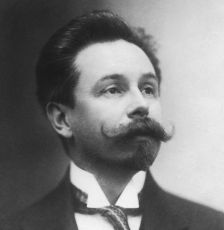
Russian Composer
I discovered the music of the Russian composer Alexander Scriabin in 1974. Recordings of his music, with only a few exceptions, were very difficult to find, and scores were nowhere to be found. For the next few years, I searched for music and scores. Reading the excellent biography by Fabian Bowers, I understood that this composer’s interest in the connection of music with higher consciousness consumed him, and certain of his compositions, which are mostly for the piano, touched very special interior realms. However, in some of his compositions, he ventured into dark places, and so I began sorting out the compositions that I accepted from those that I would not. To this day, it is mostly the piano music of Alexander Scriabin that I like to practice when I am enjoying playing music by other composers. I wrote a book about Scriabin in 1979, and I almost finished it. It remains unfinished to this day.
1976 - The César Franck School of Composers

The Great French Composer
In 1976, I began searching for the music of the impressionist Belgian composer César Franck. He was a very important composer who influenced some other very important composers. Among them were Ernest Chausson, Henri Duparc, Guillaume Lekeu, Joseph Guy Ropartz, Vincent d’Indy, and Claude Debussy. Additionally, I listened to, and found, scores for other important positive-music composers of the period such as Charles-Marie Widor, Albéric Magnard, and Gabriel Fauré. Discovering the amazing world of French classical music and these fantastic composers was a revelation for me. So much of this music was completely unavailable during the 1970s, and I had to go to great extremes to locate records and scores. When I heard that a nearly impossible-to-find recording of Franck’s Beatitudes was to be broadcast on a local FM station, I paid a professional to record it from the radio for me. César Franck’s last great large-scale work, the opera “Ghiselle”, is today (2024) still unattainable in a recorded performance.
1980 - The Transformative Music Institute
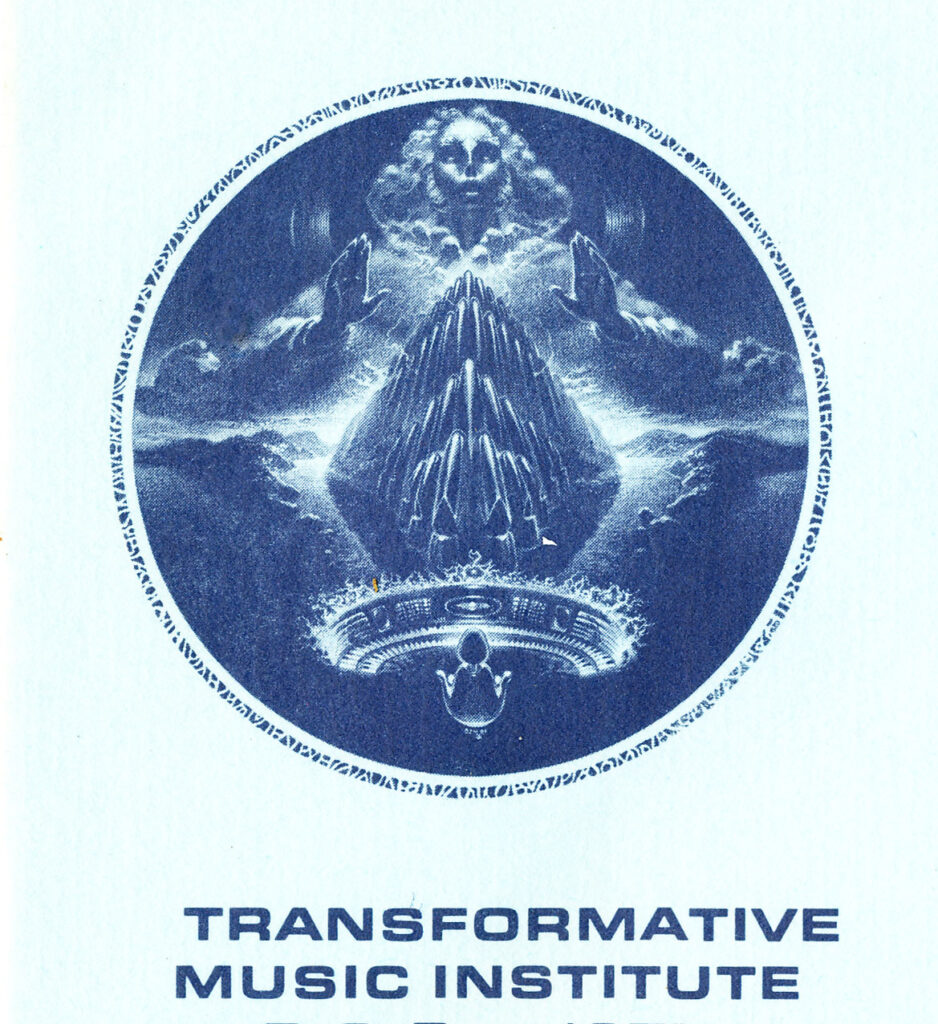
In 1980, after a decade of studying Renaissance sacred music, Gregorian chant, Wagner, Scriabin and the French impressionist composers, I now embarked upon a mission to reach out to provide educate about music and its connection with higher consciousness. I met my future wife Mary Ellen Bickford who was working with Norman Miller on their Rainbow Research Project. We began a three-year period of working together, beginning with three seminars that we held in the San Francisco Bay Area on the use of music and visual imagery for healing and upliftment, and I began giving lecture-demonstrations about positive and negative music, performing concerts of healing and uplifting music playing my 80-string zither tuned to the pentatonic music scale (the notes C,D,E,G,A). All of this activity was a part of what I called at that time, the Transformative Music Institute. Our logo was created by the late visionary artist Brian McGovern.
1980 - Rainbow Research
Norman Miller and Mary Ellen Bickford were the producers of a live event that was called “The Rainbow Light Show”. Norman was a master at creating uplifting and healing live color-slide performances that accompanied music. In 1981, Norman and Mary established a non-profit corporation called Rainbow Research. They continued their live presentations with hundreds of people attending. Mary Ellen: “Norman Miller and I had rented a beautiful home in Santa Rosa, California where we would carry out the work of Rainbow Research, Inc. and present our increasingly popular multi-image shows. We called our new home the Lighthouse. For the shows, we hung a 9′ x 9′ rear projection screen in the archway between the living room and dining room and created a theater environment with lots of chairs, pillows, and walls that were covered with original paintings and prints by the artists whose work we used in the shows.”
1980-1986 - Don Robertson Music Albums
In 1980, I created a home studio and began composing new music that I recorded using keyboards, synthesizers, a mellotron, and the amazing Synclavier II computer musical instrument. My ex-wife and I very sucessfully sold my albums to distributors in the USA, Europe, and Australia as a part of the “New Age Music” genre. These are the albums that I created between 1980 and 1986:
- Celestial Ascent (1980)
- Resurrection (1981)
- Anthem (1981-1986)
- Starmusic (1982)
- Spring (1983)
- Celestial Voyager (1984-1986)
- Castles in the Sun (1986)
1990 - Kopavi
The experience of trying to create an orchestral work using the electronic instruments of the mid-1980s was so frustrating and difficult that I resolved to turn to writing for a real orchestra instead, and I dismantled my recording studio and put the equipment with which I had recorded “Resurrection, Anthem, Starmusic, Spring, Celestial Voyager and Anthem,” into storage, and set up a writing table instead. From 1990 to 1994, I concentrated on composing my ballet called Kopavi.
1994 - Southern Gospel Music
In 1994, I decided that I did not want to return to composing new age music as the genre had changed directions. I would explore the world of gospel music instead.
Read my Article “The Genesis of New Age Music”
I knew that traditional gospel music must be an important music genre, and I knew absolutely nothing about it. On journeys to the southeastern United States, I discovered the genre of southern gospel music: a genre that was probably unknown to people who had not lived in the “South”. I moved to Richmond, Virginia in November, 1995, and Mary Ellen joined me two years later. We traveled across the South, attending numerous concerts, visiting collectors, and going to record shows and flea markets. We accumulated a fantastic collection of recordings in the process. I was very fortunate to find many rare recordings of Southern gospel music. I continued collecting until 2002, when I was satisfied that I had found everything that I had been looking for.
1994 - African-American Gospel Music
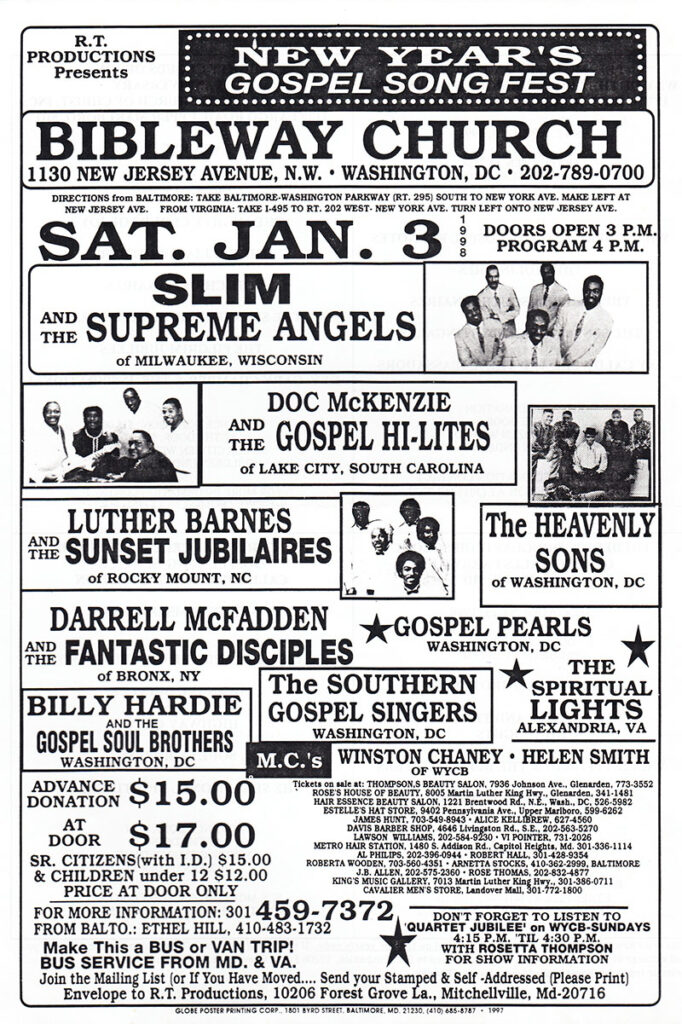
I also discovered African-American gospel music. My mentor was my good friend Barksdale “Barky” Haggins, the proprietor of Barky’s Spiritual Store in downtown Richmond Virginia, where I lived from 1995 to 2000. His store is still the best, and perhaps the only, traditional gospel music store in the USA. Along the East Coast from Washington, DC, down to Raleigh, North Carolina, was a strong area for traditional African-American gospel music, and Mary Ellen and I attended concerts on a regular basis, feeling very privileged to be a part of a genre of music that few people of caucasian descent appeared to know about. Like the music of the southern gospel tradition, we accumulated a large collection of recordings, and memories we will never forget. Traditional black gospel music is something quite apart from the the “contemporary” styles of gospel music that are promoted by commercial interests, leaving behind what for us what really mattered in this important American music tradition.
1996 - The "Southern Wind" String Quartet
In January, 1996, I awoke one morning realizing that I had been dreaming the opening of a string quartet. I grabbed some paper and began writing down what I clearly heard in the dream: the first few pages of the first movement then allowed the music to spontaneously flow for a few more pages. I wrote the second movement very spontaneously one morning, copying quickly what I heard in my mind. During the following year, I awoke hearing very clearly the third movement. The final, fourth, movement didn’t come to me until 2001. One morning, I felt a flash of inspiration! I went immediately to the piano, and as I began clearly hearing the new music of the fourth movement, I quickly wrote it down, and by the end of that day, the movement, as it stands today, had been completed.
1997 - DoveSong.com
During our gospel-music period, I had signed a contract with the Commonwealth of Virginia, and for four years, wrote software for the Virginia Department of Motor Vehicles. Part of my work was implementing the department’s first website. In March, 1997, Mary Ellen and I hired the young man who was programming the DMV website to create a website for us during his off-hours.
Mike Martin unveiled the new Dovesong website for us (shown in the video), and DoveSong.com was born. One of the very first websites dedicated to music education, if not the first, DoveSong became our platform for turning the world onto positive music. The site became a hit pretty much right away, and became more and more popular as we added more content during the following five years. When we added our MP3, Score and Text libraries in 2000, the site was already high in search-engine rankings. Our mp3 recordings of gospel and North-Indian classical music recordings that were available for download were in constant demand for several years, until we could no longer afford hosting costs. We spread the word about positive music far and wide. The site received over a million views every year for many years.
2002 - Songwriting for Dummies - First Edision
In 2002, Jim Peterik, Mary Ellen, and I wrote the best-selling book Songwriting for Dummies. This coincided with a three-year period where I concentrated on collecting and studying the song traditions of popular, country, and gospel music. The research that I had already begun when the book contract was offered to us continued, and, with exception to some of the more advanced studies, became sections of the book. Although I wrote a third of the book, we left my name off as an author because the publishers allowed only three names, and Dave Austin was the point man. Mary Ellen and I, then living in Georgia, moved to Nashville in 2003, when I retired from the computer industry. We loved Nashville and moved right into the heart of the music world, meeting many of the great songwriters, composers and musicians who lived and worked there. Songwriting for Dummies was revised in 2010 by Dave Austin and his wife, and much of the information that I had provided was removed.
2005 - "Music Through the Centuries"
I called my 2005 publication Music Through the Centuries an “on-line book” because, rather than publishing it, I simply added it to the DoveSong.com website, where I could provide links to material that was available on the internet. The subject of the book is my discovery that each of the six centuries of classical music that I had been researching since the 1960s had its own particular and specific musical style that began in the beginning of the century and ended at the end of the century, when that style of music either transitioned into the next century’s style, or was replaced by it. My discovery lent further credence to my research, since 1962, of historical cycles as they related to music and art, although I did not fully understand how this realization of the specific styles for each century fit into a larger cyclic picture until 2016, when I made yet more discoveries.
2006 - DoveSong iUniversity
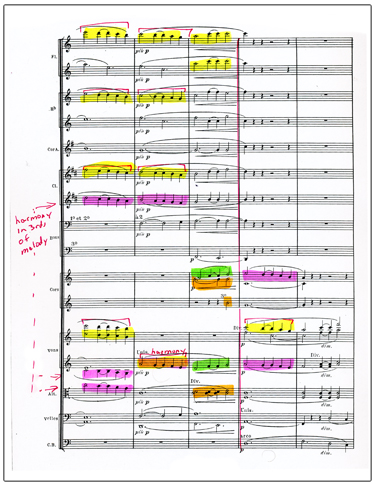
The DoveSong iUniversity:
Introduction
I began consolidation of all the music scores that I had collected in 2005, and this work continued until 2019. Because the publication of our library of scores in printed form would have been prohibitive, I decided that the scores should be made available on the internet. I created a section on our DoveSong.com website describing a publication library and called it “The DoveSong iUniversity”, as at that time, “everything internet” seemed to begin with a lowercase “i” (iPhone, iMusic, iBooks, iPad, etc.). By 2006, the Musical Kaleidoscope that we had originally conceived of in 1997 had been transformed from a radio show that I had first produced when I was only 12 years old, and that I later re-created with the 1980 Sonoma State University radio program, into a more encompassing format that included videos and “follow-along” and study scores in video format.
2006 - The Jubilation Mass
Listen to the instrumental version of the
Jubilation Mass
In 2006, I was preparing to write a symphony when I had a dream that I would be writing a mass, for both orchestra and chorus, instead. I immediately went to work composing and orchestrating the new work. Completely tonal, harmonious music, I chose the name Jubilation Mass because of its joyous, uplifting spirit.
I created a website that explains the mass. I also created an instrumental version of the mass using sampling software to make the music of my mass, that had not been performed, available for listening.
2007 - Research in Europe

A Photo Journey in Europe:
DonRobertsonMusic.com
In 2007, I undertook an almost two-month journey to Europe. I had been so imbued with European culture that it was almost always a part of my life in one way or another, since my first lessons with my childhood music teacher, Antonia Brico, whose home was filled with great European culture: photos, letters, books, records.
I had first visited Europe as a part of a school group in 1958, and Mary Ellen and I had an amazing European trip in 1999. My 2007 trip was an exploratory trip to discover music and language culture. There was a two-week intensive course in French at the Institute Alliance Française in Paris, and a two-week intensive course in German at the Goethe-Institute in Berlin. It was on this trip that I discovered my favorite places for listening to music: The Concertgebouw in Amsterdam and the Thomaskirke in Leipzig, where Bach had been kantor for the last 27 years of his life, and where Wagner and my own great-grandfather were both born. I shipped back to my home in Nashville seven boxes of scores, books and CDs from Europe.
2009 - More Research in Europe
A Photo Journey in Europe:
DonRobertsonMusic.com
I made another two-month exploritory trip to Europe in 2009. I mapped out the entire trip beforehand, setting up meetings and gathering information before I left. Now that I was past the language barrier, I visited cathedrals and attended concerts in Paris, the Royal Concertgebouw in Amsterdam, and in Berlin. I met with two of the top organists in France (Thierry Escaich, Vincent Warnier), was invited to a radio interview (“Mark from Holland”), and hung out with Manuel Gottsching and Gert Wegner in Berlin. Another six or seven boxes of scores, books and CDs returned via post (OK, one was lost by the US post office).
2013 - "Musical Kaleidoscope Presents"
Throughout most of the year 2013, Mary Ellen and I hosted “Musical Kaleidoscope Presents” in our Nashville home on Thursday nights. These events were attended by up to six people, and each event had a different theme. These were preparations for the shows and classes that we would begin producing in video format in April of 2017.
Jeff Lisenby
Nashville’s own Jeff Lisenby presents this special Musical Kaleidoscope class in 2013. Jeff was a very important and accomplished accordionist and a big supporter of the Musical Kaleidoscope project. Our hearts go out to his family after his untimely passing in 2021.
Futureman
This important Musical Kaleidoscope class with Roy “Futureman” Wooten was recorded in Nashville on July 18, 2013. Titled “The Composer, The Myth, and the Story”, Futureman’s fascinating presentation explores the connections between music and the story that it accompanies.
2014 - "The Scale"
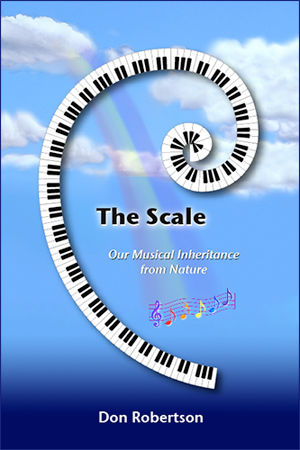
In 2014, Mary Ellen and I published my book “The Scale,” which for the first time made my most recent discoveries about the nature of our harmonic scale (the basis of all creation, including music) as well as a summing-up of my understanding of the nature of positive music that I had been writing about for over fifty years.
Read The Scale online:
The flipbook version is free here
2018-2022 "The Musical Kaleidoscope Video Library"
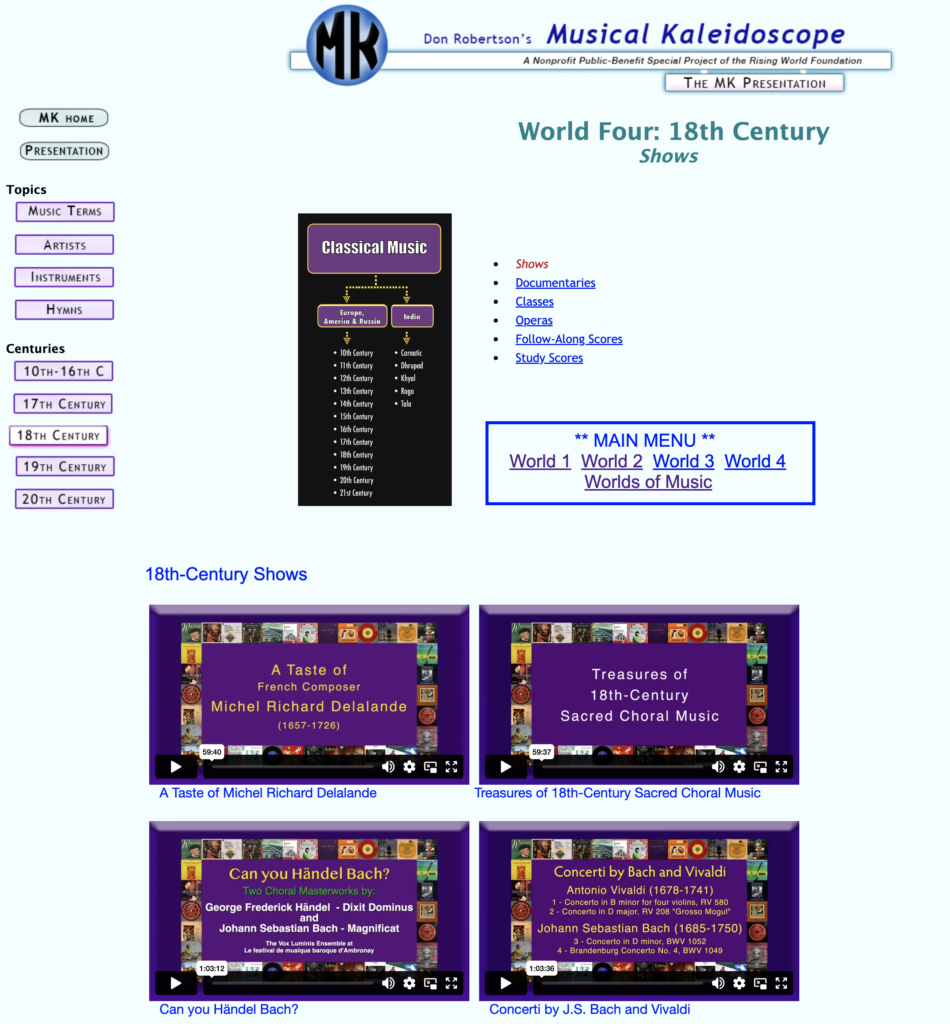
In 2018, we began creating a video library of content examples for the Musical Kaleidoscope Project. These videos provide the basis for the Musical Kaleidoscope concept. During the four-year period of 2018 to 2022, we completed over 1,000 videos contained in four “worlds of music” with content types such as concerts, shows, classes, documentaries, scores, films, and operas.
